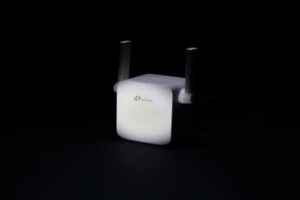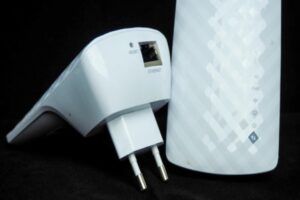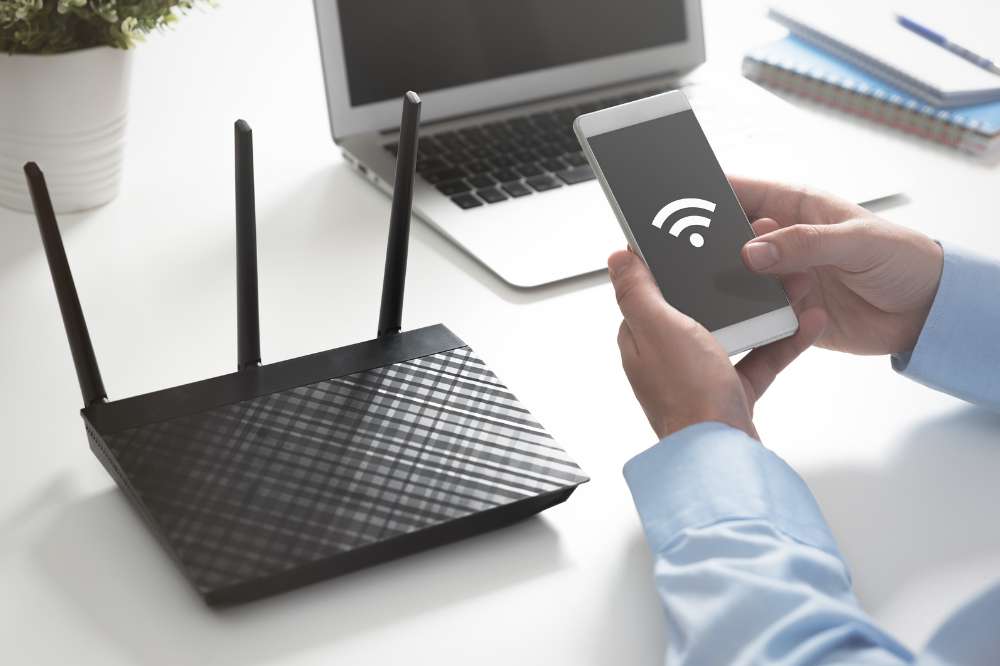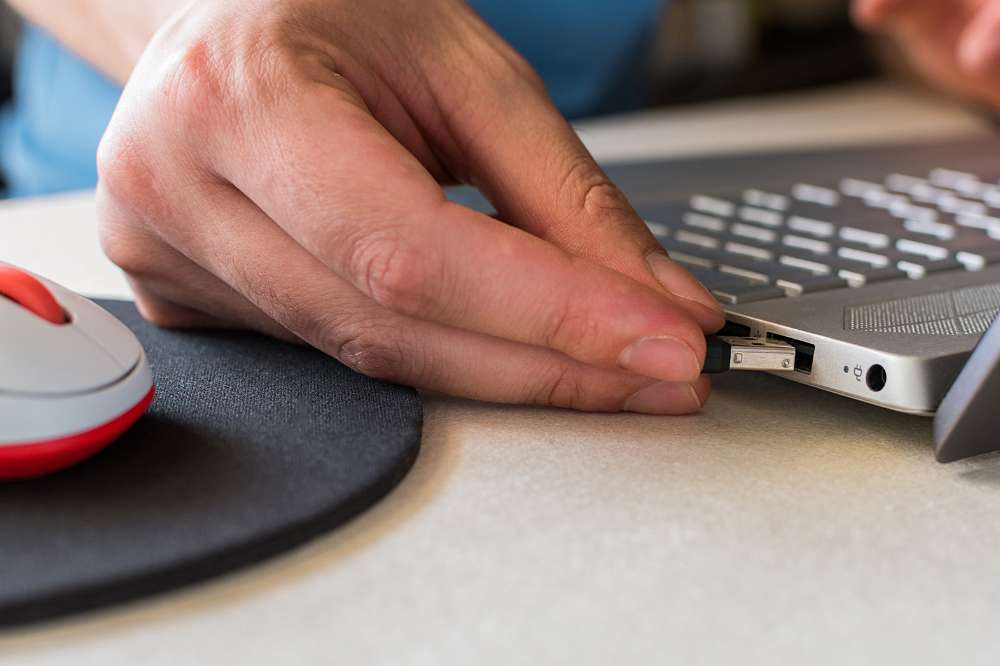You’re listening to your favorite podcast and suddenly run into a Wi-Fi dead spot? We totally understand how irritating that is! When all other rooms have good coverage and a strong signal, and your Wi-Fi signal is weak or non-existent in your room/office.
Do you know the problem of a Wi-Fi dead zone is caused by several factors (such as furnishings or walls, router positioning)? A Wi-Fi extender can help you fix these Wi-Fi dead spots.
Wi-Fi extenders are known by a lot of different names like Wi-Fi booster, Internet extender, etc. They do just what their name says: increase the range of a Wi-Fi signal from a router.
They are most effective when used with one or two devices that are always in the same location. A Wi-Fi extender should be placed midway between a router and an electronic device. They increase the range of a Wi-Fi signal but do not improve it.
- Compatible with major cable internet providers including Xfinity, Spectrum, Cox and more. NOT compatible...
- [Compatibility] 12V Power Supply Adapter Compatible with Netgear, Linksys, Asus,Motorola, Motorola/Arris...
Before we get into the details of how Wi-Fi Internet extenders work, let’s discuss why you would need one.

Why Would I Need A Wi-Fi Extender?
Most of the time, a bad router location is the cause of a Wi-Fi dead zone in the home. Buying an extender isn’t the solution if your device is too far away from the router.










The Wi-Fi router could have been positioned in a corner or anywhere else where walls and other obstructions prevent the wireless signal from reaching other areas.
Before deciding whether or not to purchase a Wi-Fi extender, you should first perform the following simple checks to ensure that it is required. Does the speed of your Internet connection depend on your router? Absolutely.
To test whether you can receive a solid Wi-Fi signal by increasing its range and covering areas where there was previously no coverage, try moving the wireless router to a more central spot away from walls.
Check out these troubleshooting steps if you’re experiencing connection loss, buffering, or an inability to connect:
- Determine whether the issue is with your Wi-Fi or with your device first. Try using a different device to connect.
- If your laptop’s Wi-Fi won’t load, but it does on your phone (and your smartphone is connected to the Wi-Fi), the issue is most likely with your laptop.
- If your device is the source of the problem, simply reboot it. Any blockages preventing a Wi-Fi connection can be refreshed by cycling the device. Also, check the device’s network settings to make sure Wi-Fi is turned on.
- Check whether your router software is up to date since upgrading the latest firmware might fix issues like dropped signals and poor coverage.
- Inspect the router for missing or broken elements such as antennas, ports, and wires that could hinder the router’s potential to transmit a wireless signal.
- If the problem persists, some routers include a hard reset function. This method often entails pressing a small button in a slot on the back of the router with a paper clip or pin. Simply press it, then wait for the router to restart. Check if any additional steps are required for your individual router model.
- Your home or office’s location, such as in a multi-story building or adjacent to other buildings, may bring the possibility of interference from a nearby wireless network. By changing the channels on your router, you can alleviate problems like poor coverage and interrupting signals.
- Purchasing a new router to replace an old and out-of-date router will provide a much bigger coverage area due to the new router’s latest technology and current standards.
- Finally, if nothing else works, contact your Internet service provider. A repair technician will most likely need to come out.
If your Wi-Fi is working properly but your signal is weakening as you travel further away from your router, increasing the router’s signal strength is crucial. Consider buying a Wi-Fi extender in such a situation.
How do Wi-Fi Extenders Work?

Wi-Fi extenders are a good way to expand the range of a Wi-Fi signal between a router and a device. A Wi-Fi extender establishes a wireless connection with your router initially, and it becomes a part of your wider network once it is connected to your router.
The Wi-Fi extender transforms and disperses your Internet connection as a wireless signal from every access point using radio waves, allowing you to access it from areas of your home that are ordinarily inaccessible.
Although each Wi-Fi extender may have its own network name and password, the majority of them allow you to override the default and duplicate your existing Wi-Fi network name and password.
Your Internet-connected devices, such as your computer or smartphone, will automatically detect which signal is better and connect to it if they share the same network name.
When installing a Wi-Fi extender, you will have two networks to select from (the router and the extender) on two bands (2.4 GHz and 5 GHz). The first time you use the extender, you must manually connect your device to it.
You may quickly switch between the router and the extender network once you’ve saved it, depending on which one is stronger at the time.
Wi-Fi extenders must still be within an acceptable distance of a Wi-Fi router, roughly 20 feet maximum, to function properly.
A Wi-Fi extender might be a useful solution for households with a Wi-Fi range of 1500 square feet or less. They come from various manufacturers and can be found in electronic stores.
Types of Wi-Fi Range Extenders

The following are the most common Wi-Fi extender types:










Desktop Range Extenders
These extenders will feature several Ethernet ports and will resemble a compact router. They will increase Wi-Fi speeds by connecting directly to your device. However, the desktop range extenders are quite large and require a lot of room to fit.
Plug-in Wi-Fi Extenders
These extenders are much smaller than desktop extenders, and you can plug them into any regular power socket. Some varieties of plug-in extenders have external antennas, while others have internal antennas to keep the profile minimal.
These must not be placed on a surface and will connect straight to an electrical outlet in the wall. This extender will contain a single Ethernet port as well as a power-through port that will allow you to utilize the electrical outlet while the extender is connected.
Wi-Fi Extender Alternatives
There could be a variety of reasons why your Wi-Fi signal is poor or non-existent in your location, and not all of them necessitate the use of a Wi-Fi extender. There are other ways to improve a Wi-Fi connection, and not all of them cost money.
Here are a few examples of possible solutions:
It’s Time to Upgrade Your Router
Compare the specifications of your present router to those of the most recent versions to see if it’s outdated.
Change The Location of Your Router
If you need a new Ethernet port, contact your ISP. Try to locate your router in a central area so that you may benefit from 360-degree coverage.
Consider Switching to A Mesh Network
Mesh networks are made up of many nodes. The first connects to your modem, and the others are connected in a daisy chain throughout the remainder of the room. It’s especially useful in spaces with numerous floors that are more than 1500 square feet.
However, a Wi-Fi extender, sometimes, can be the ideal solution for a persistently slow Internet connection.
FAQs
Here are a few other common questions people ask about Wi-Fi extenders.
What are Mesh Networks and Wi-Fi Range Extenders?
Wi-Fi extenders and mesh networks are equipment that can be used to boost your wireless signal strength and extend your Wi-Fi coverage.
How Many Times Can A Wi-Fi Extender be Used?
With a few exceptions, you can utilize two extenders. However, we would suggest not to connect two extenders wirelessly because the second extender does not really function well. Therefore, the main router should be connected to each extender.
Does A Wi-Fi Extender Cause Issues?
Range extender firmware that is out of date can create network connectivity difficulties. To fix this, you’ll need to update your device’s firmware.
Can I Switch Off The Wi-Fi Extender When it is Not in Use?
It’s entirely up to you whether you want to leave your Wi-Fi range extender on or turn it off when it’s not in use.
Do Wi-Fi Extenders Get Hot When They’re in Use?
It is not typical for a Wi-Fi extender to become hot; however, a slight warmth to the touch is normal. In general, electronics will warm up when the device’s circuits and components operate and flow electricity through them.
Conclusion
Finally, do not be afraid to invest a little more money on a Wi-Fi range extender to improve network coverage in the workplace or at home. You will be provided with the best and most up-to-date gear to work with, as well as a strong Wi-Fi connection to support your Internet-dependent tasks.
Last update on 2024-12-21 / Affiliate links / Images from Amazon Product Advertising API





